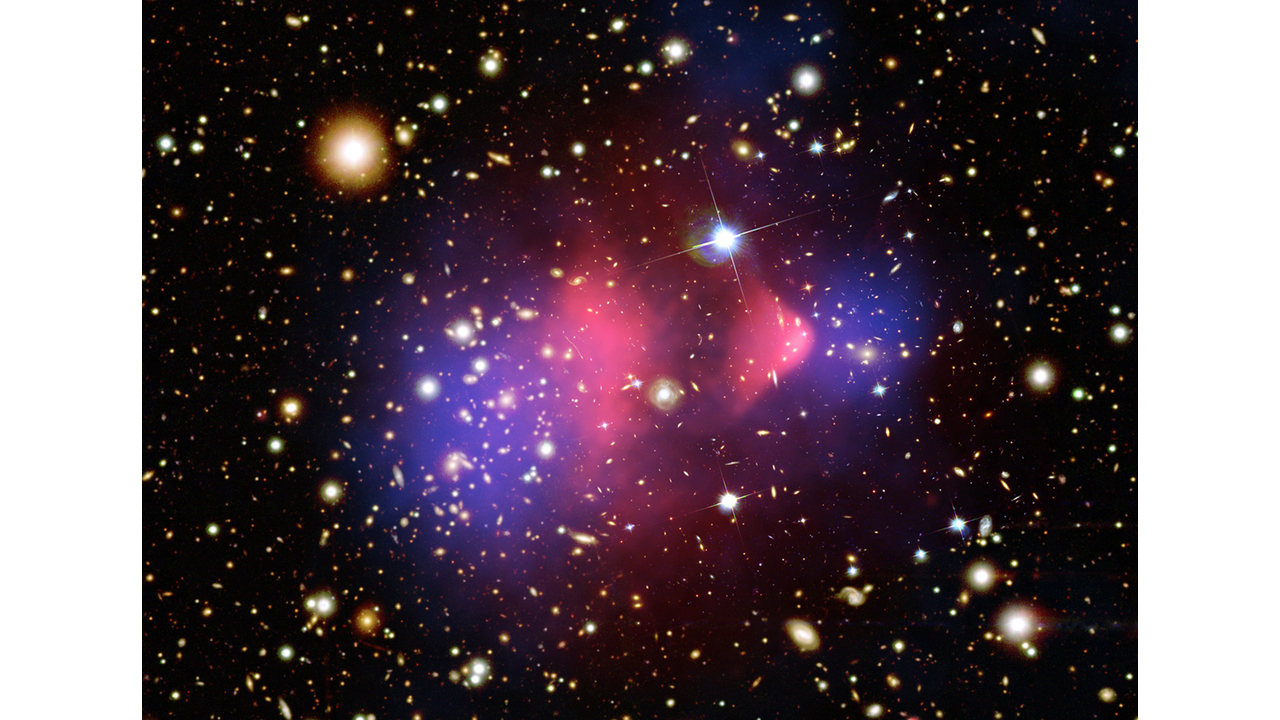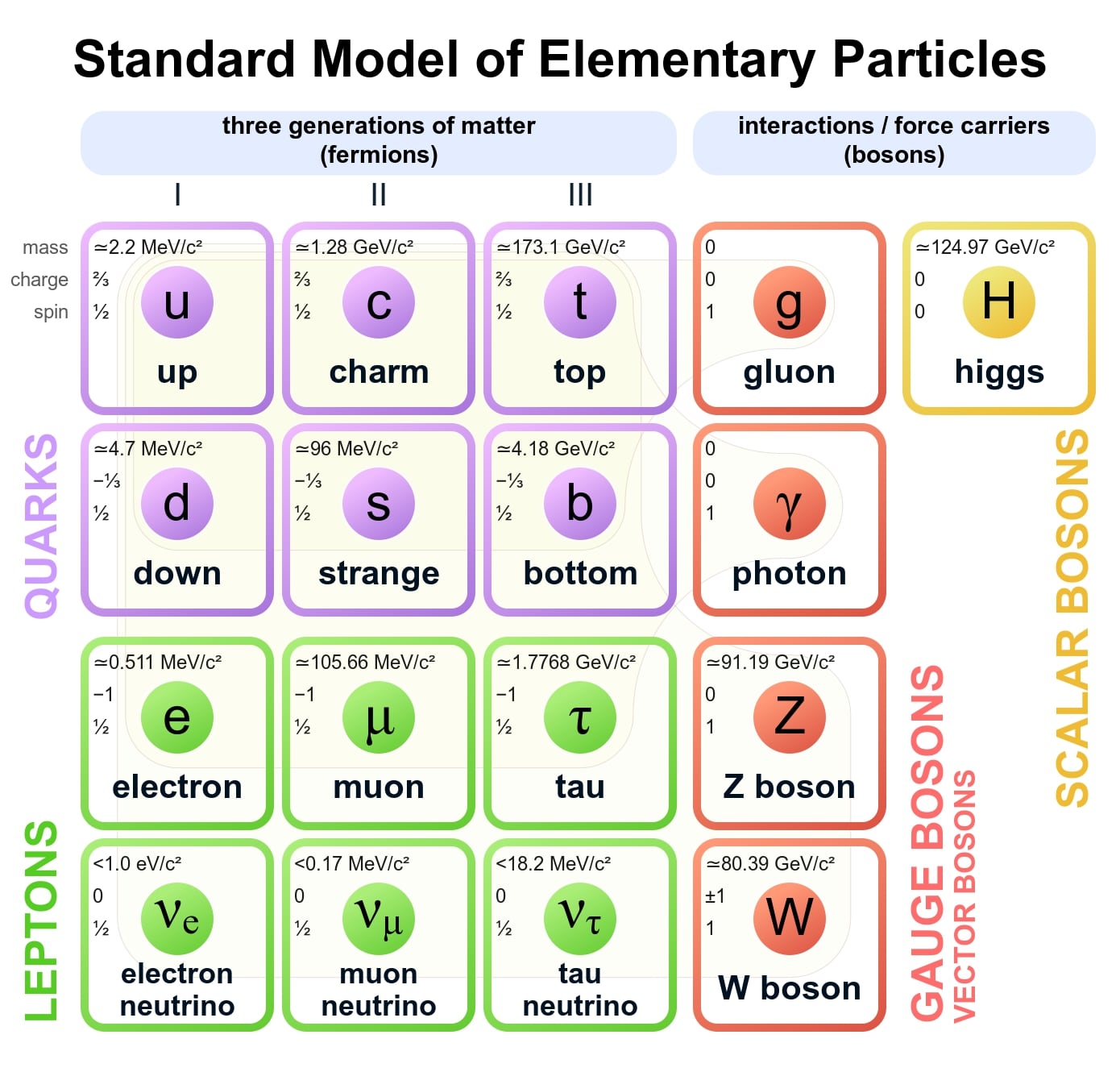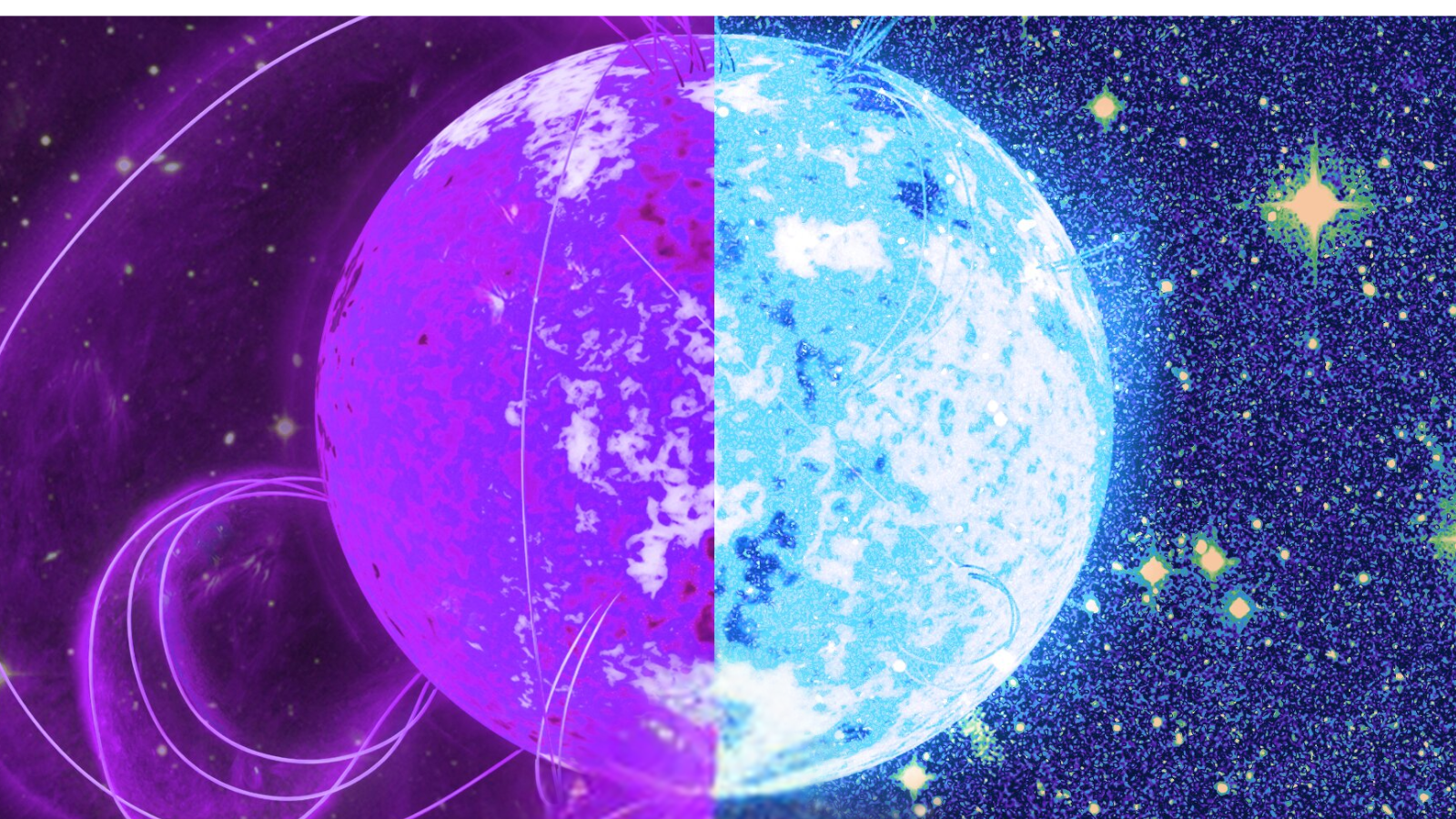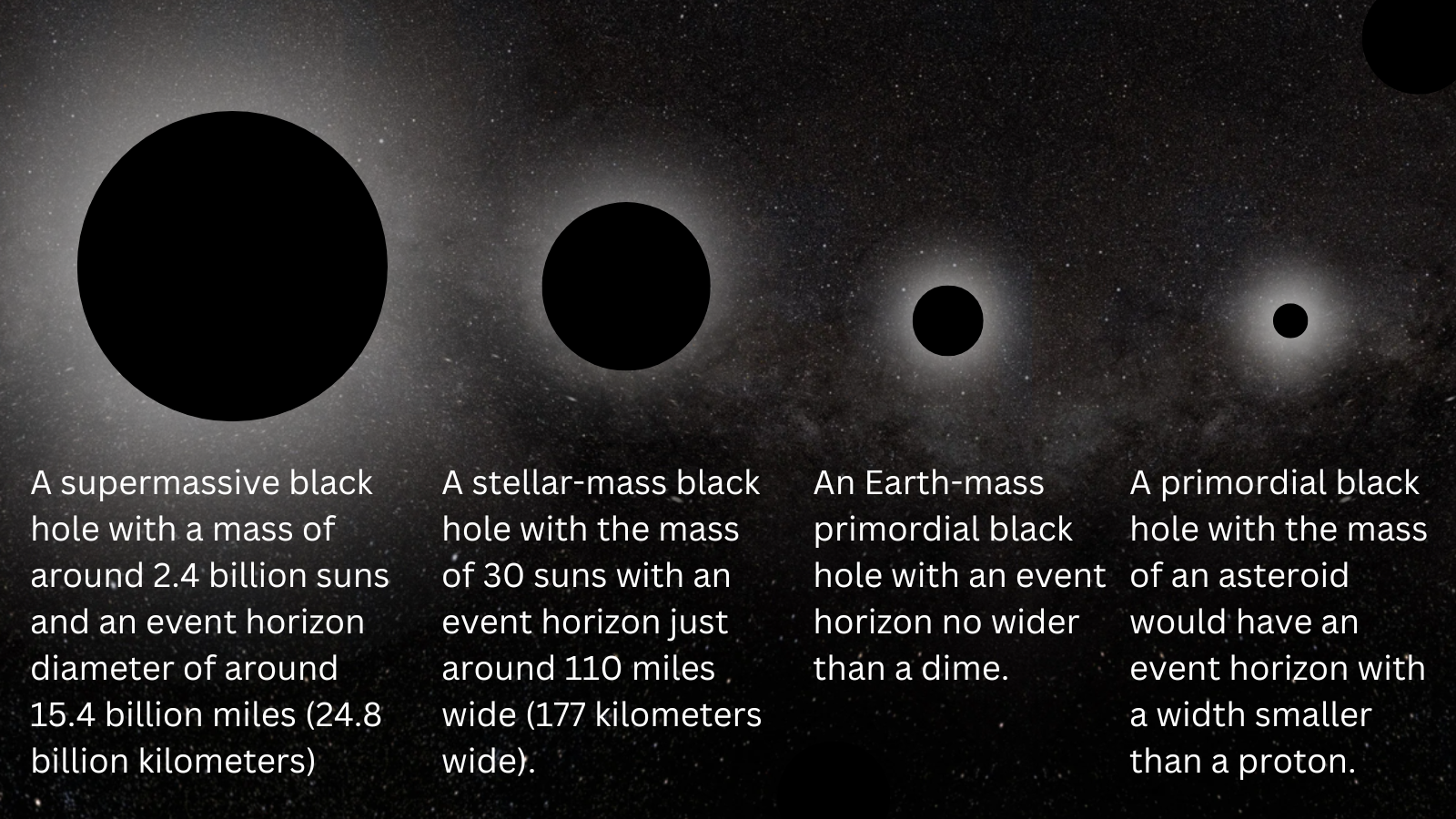Happy Dark Matter Day! Meet the usual — and unusual — suspects in this cosmic mystery

Though Halloween will undoubtedly take the spotlight today, there’s another spooky event worth celebrating. Thursday (Oct. 31) marks this year’s Dark Matter Day as well, a time during which scientists celebrate the hunt for the universe’s most mysterious stuff.
The day has been celebrated since 2017, and this year, it will consist of over 350 global, regional and local events that aim to engage the general public with the mystery of dark matter.
And what better way for Space.com to mark Dark Matter Day than by gathering the current dark matter suspects? Let’s begin, shall we?
Before proceeding to the cosmic line-up, it is worth checking out the “crime scene” to determine exactly why dark matter constitutes such a major mystery scientists are desperate to solve.
Why is dark matter so problematic?
Think of everything you see around you on a day-to-day basis: your bed, the water flowing from your taps, your TV, your breakfast, every car and bus you see on the way to work, your colleagues, your desk and computer, your armchair and the glass of wine when you get home, next door’s cat and the unwanted “present” it has left in your garden — and even you, yourself.
All of this stuff is made up of matter composed of atoms, which themselves are built from particles of the baryon family: protons, neutrons and electrons.
Let’s now go further afield. We’re leaving Earth (which, for the record, is also made of baryonic matter). The moon is also made of the same type of matter we’ve been talking about and so are the other planets. Snuggled between the planets of Mars and Jupiter are asteroids in the main asteroid belt. Those are made of baryonic matter. Icy comets in the Kuiper Belt at the outer edge of the solar system? Yup, baryonic matter.
Despite its fiery nature, the sun is also composed of these baryonic building blocks — and so is every star and every exoplanet beyond the solar system. That includes exotic and dead stars like white dwarfs and neutron stars as well as pulsars rogue worlds. In fact, so is even the gas and dust that drifts between all of this stuff.
Now, consider this: Baryonic matter accounts for just 15% of all stuff in the universe.
The rest is dark matter.
And we have no idea what dark matter is.
We can see all the things listed above because the baryons that compose their constituent atoms strongly interact with particles of light, or photons, as well as one another.
Dark matter is different.
That’s because, either it doesn’t interact with everyday matter and photons, or it does so in such a weak and rare way that we can’t detect it. Thus, dark matter is effectively invisible to us. Yet, we know dark matter must be out there because we can infer its presence. This is because, despite not interacting with the electromagnetic force carried by photons, it does interact with gravity. This interaction is observable via the effect dark matter has on light and on everyday matter.

In fact, scientists theorize that the universe took shape when matter flowed along threads of dark matter in the cosmic web and clustered at junctions where those threads meet. Today, galaxies swirl so rapidly that if it weren’t for the gravitational influences of the invisible dark matter that surrounds them, they would fall apart.
Now, let us examine some of the shady characters that comprise the leading dark matter suspects.
Meet the WIMPs
Particles that perfectly fit within the Standard Model of particle physics — the best description we have of the universe’s particles and their interactions — aren’t a good fit for the qualities of dark matter.
That has led physicists to begin hunting for extensions to the Standard Model, which could contain potential dark matter candidates. One potential framework is called “supersymmetry,” or “SUSY.” This idea suggests that, for every particle in the Standard Model, there is a partner that possesses a different “spin” value. A spin value is a quantum form of angular momentum.
One broad class of SUSY particles that could account for dark matter are the “WIMPs” or “Weakly Interacting Massive Particles.” There isn’t a strict definition of what a WIMP is, but most models suggest these would be electrically neutral, non-baryonic particles that are heavy and slow-moving, or “cold.” This heavy nature would allow WIMPs to cluster together where galaxies and galaxy clusters grow, something not possible for a light and fast-moving dark matter particle.
Hypothetical examples of WIMPs include fourth-generation neutrinos, which would be heavier than standard neutrinos (often referred to as “ghost particles” because of their weak of interactions with matter), Kaluza-Klein particles and neutralinos.

One experiment intensely searching for physics beyond the Standard Model is the Large Hadron Collider (LHC), the world’s most powerful particle accelerator located beneath the border between France and Switzerland and operated by CERN.
“The Standard Model alone does not provide an explanation for dark matter. In many theories, scientists predict the lightest supersymmetric particle to be stable and electrically neutral and to interact weakly with the particles of the Standard Model,” CERN explains on its website. “These are exactly the characteristics required for dark matter.”
Yet, thus far, no evidence of particles beyond the Standard Model has been detected at the LHC. Likewise, these weakly interacting particles have failed to manifest in streams of charged particles called cosmic rays that bombard Earth from nearby galaxies and galaxy clusters. This has cast some doubt on the WIMP hypothesis, but dark matter detectives would definitely advise them not to leave town.
What about the Axions?
Axions are hypothetical particles that are lighter than WIMPs, but they still have qualities that make them good candidates for dark matter. Particularly, if they exist, axions wouldn’t interact with photons and would thus be “invisible” like dark matter.
Interestingly, axions weren’t first hypothesized as a candidate for dark matter. These particles, which also remain undetected, were independently suggested in 1978 by physicists Frank Wilczek and Steven Weinberg. The purpose of axions was to relieve a problem with the Standard Model, namely an asymmetry called the “strong CP problem.” The strong CP problem is way too complicated to get into here.
Only later were axions suggested as a potential candidate for cold dark matter. They are actually now considered to be the most likely suspects in the dark matter case.
“Axions are one of the prime candidates for dark matter,” Kings College London researcher Malcolm Fairbairn said in a statement earlier this year. “Being able to find the axion would likely help us solve one of science’s biggest questions, over a century in the making, and help lay bare the history of the early universe.”

Because of their lightweight nature, for axions to account for dark matter, they must exist in vast numbers. This means they would also have to be packed into dense conglomerations. If this were the case, then in regions with high dark matter concentrations, such as the centers of galaxies, axions could come together to form so-called “axion stars.”
Despite being the prime suspect in the dark matter mystery, scientists have thus far failed to uncover evidence of axions. Additionally, current experiments have ruled out axions in the mass and energy range first postulated by Wilczek and Weinberg. Yet, many scientists are confident they are hot on the tail of these cold dark matter candidates.
“We discovered that they [axions] have the capacity to heat the universe just like supernovas and ordinary stars after coming together in dense clumps,” Fairbairn said. “Armed with that knowledge, we know with far more certainty where to point our instruments out in the field to find them.”
The obvious choice for dark matter is particles outside the Standard Model of particle physics, such as those mentioned above. But as in all of the best mysteries, there should be room for a culprit to emerge who thinks they have escaped suspicion.
Just one more thing: MACHOs.
One possible explanation for dark matter that wouldn’t have to invoke new particles or extensions to the Standard Model is “MACHOs,” or “Massive Compact Halo Objects.” These are celestial bodies that emit little to no radiation and drift through interstellar space alone, meaning they are simply too faint to be seen.
While you may not have heard of MACHOs, you will probably be familiar with some of the objects that have been proposed to fill this category. These include cool red dwarf stars, “failed star” brown dwarfs and stellar remnants like white dwarfs and neutron stars. Some scientists also consider isolated, stellar-mass black holes to be potential MACHOs.

MACHOs seem to fit nicely with the concept of Occam’s Razor or the “principle of parsimony,” which suggests the hypothesis that requires the fewest entities to be added is likely the right one. If your victim has a bullet hole in their chest, it’s likely the suspect holding the smoking gun that did it.
Yet, despite this, these objects have mostly fallen out of favor with dark matter hunters. That is partly because even if MACHOs did explain dark matter, there aren’t enough of these bodies to account for all dark matter. Current estimates suggest that all of the bodies posited as MACHOs collectively could only account for 20% of dark matter.
That means additional entities would have to be put forward anyway to explain that other 80% of dark matter.
It’s hard to explain the drop in support for MACHOs as dark matter more succinctly than theoretical physicist John Ellis of King’s College London.
In a 2016 Nature article, Ellis simply said: “MACHOs are dead.”
Tiny black holes from the dawn of time
A peculiar candidate for dark matter pointed at by some scientists are primordial black holes left over from just after the Big Bang — some of the earliest moments of our universe.
Supermassive black holes that sit at the hearts of all large galaxies have masses millions, or sometimes even billions, of times that of our sun, and stellar mass black holes born when massive stars collapse have masses between 10s to 100s of times that of the sun — but primordial black holes are thought to be much less monstrous.
The masses of primordial black holes are proposed to range from that of a planet to an average asteroid. This means they can’t have formed from the gravitational collapse of a dying star; no stars are that small. Instead, scientists suggest that initial density fluctuations in the early universe could have created primordial black holes.
The relatively tiny mass of primordial black holes would also give them a diminutive size. If a primordial black hole had a mass around that of Earth, it would be no wider than a dime. If a primordial black hole had a mass around that of an asteroid, it would be smaller than a proton.
It is little wonder these black holes, if they exist, have remained undetected.

Primordial black holes could be a good fit for dark matter because, like all black holes, they would be bounded by one-way light-trapping surfaces called “event horizons.” That would mean that these black holes, like dark matter, don’t emit or reflect light.
There is a major flaw in the “primordial black holes as dark matter hypothesis,” however. Stephen Hawking proposed that black holes “leak” a form of thermal radiation that was later named “Hawking Radiation.” This should eventually lead to a black hole evaporating until it disappears in an explosion. However, because the temperature of a black hole is inversely proportional to its mass, the bigger a black hole is, the colder it is and the slower it “leaks.” That means truly massive black holes, like supermassive black holes and even some stellar mass black holes, would take a period longer than the lifetime of the cosmos itself to evaporate.
That isn’t the case for tiny primordial black holes, however, which would be very hot and, therefore, very efficient at leaking thermal radiation to the cold of space. If Hawking radiation holds true, these small black holes should have disappeared in a “puff of heat” long ago. That means they obviously wouldn’t be around now to account for dark matter.
Quite the alibi.
However, that hasn’t persuaded all dark matter detectives to drop the case against primordial black holes. Some scientists have suggested a number of rescue mechanisms that could allow primordial black holes to live extended lifetimes in the 14.6 billion-year-old universe. Thus, they remain in the frame for dark matter, at least for now.
Are our theories of gravity wrong?
Another outside possibility to explain dark matter is that there is no dark matter to be explained at all.
Developed in 1982 by Israeli physicist Mordehai Milgrom, Modified Newtonian dynamics (MOND) suggests that dark matter doesn’t exist in the first place. MOND instead suggests that adjusting Isaac Newton’s second law of motion (which says the rate of a body’s change in momentum is equal in magnitude and direction to the force that caused the change).
This adjustment would apply in cases of small acceleration, such as the kind felt by stars at the edge of a swirling galactic disk. This would essentially negate the need for dark matter to exist, as no “glue” would be required to hold galaxies together.
You can’t solve a crime if no crime was committed.

The big problem with MOND is that it can only explain this particular aspect that has led astronomers like Vera Rubin to posit the existence of dark matter in the first place: the fact that galaxies are held together despite their rapid rotation.
Other phenomena implying the existence of dark matter, such as the greater diversion of light around galaxies than those galaxies’ visible matter would cause, discovered since then, aren’t quite covered by MOND.
MOND also struggles to explain fluctuations called “baryonic oscillations” seen in the cosmic microwave background (CMB), a “cosmic fossil” field of radiation that permeates the entire universe and is left over from an event that occurred just after the Big Bang. Additionally, because MOND is not a theory based on Einstein’s theories of general and special relativity, these adaptions of Newton’s law would have to explain all the phenomena that have been used to validate these theories, which have stood tall for over a century.
As a result, most scientists have abandoned the concept of revising Newtonian gravity, with just a few dedicated astrophysicists still persevering with it.
Of course, there is still a chance that MOND, along with any of the other suspects we list above, could eventually be revealed as the true answer to the dark matter puzzle.
Indeed, by the time we reach the next Dark Matter Day in 2025, new evidence will have been gathered, and a new suspect may lead the pack in place of axions. Maybe WIMPs and MACHOs will bounce back by then, or maybe the alibi of primordial black holes will completely crumble at last.
That’s the beauty of an unsolved mystery.
Source link



